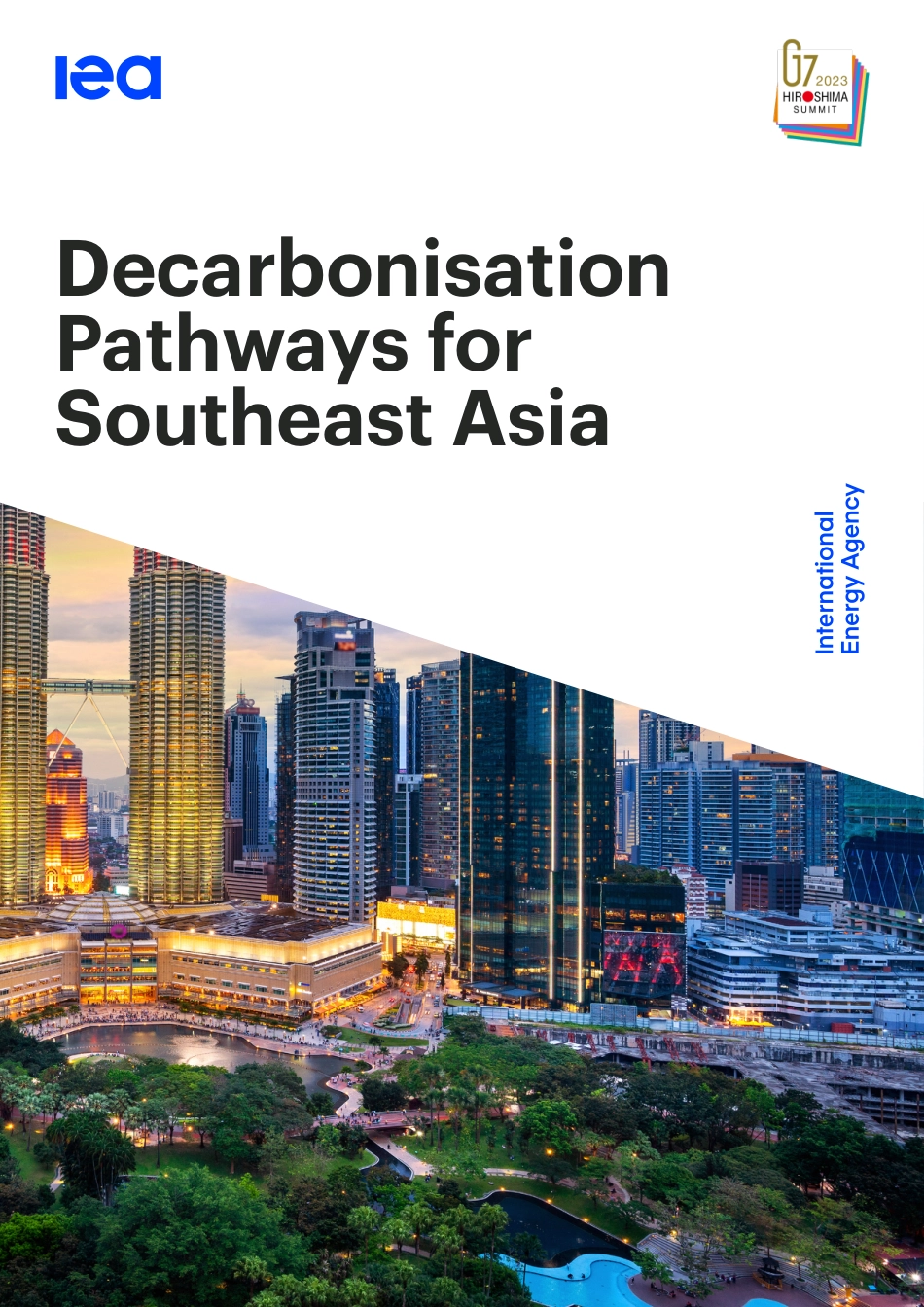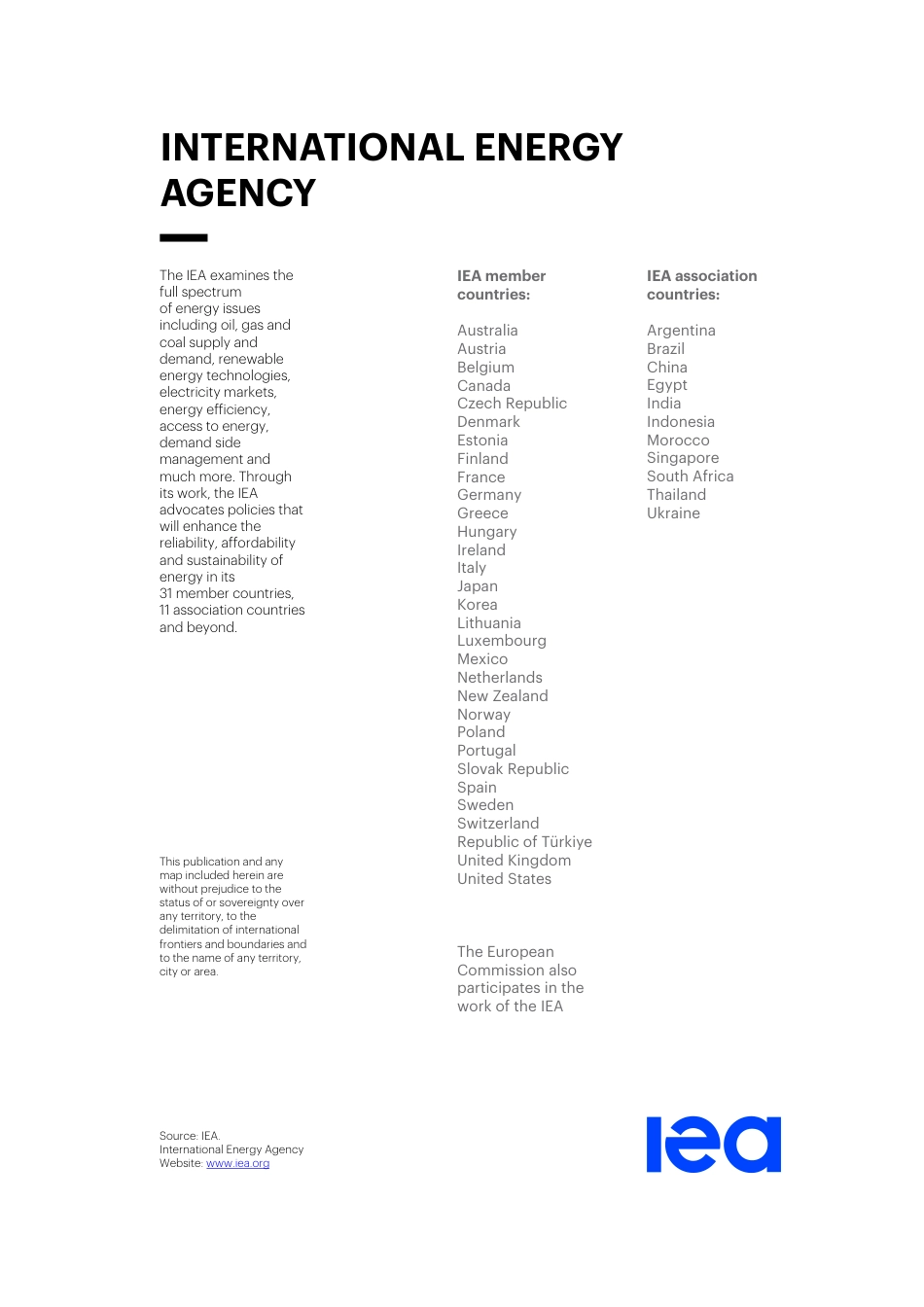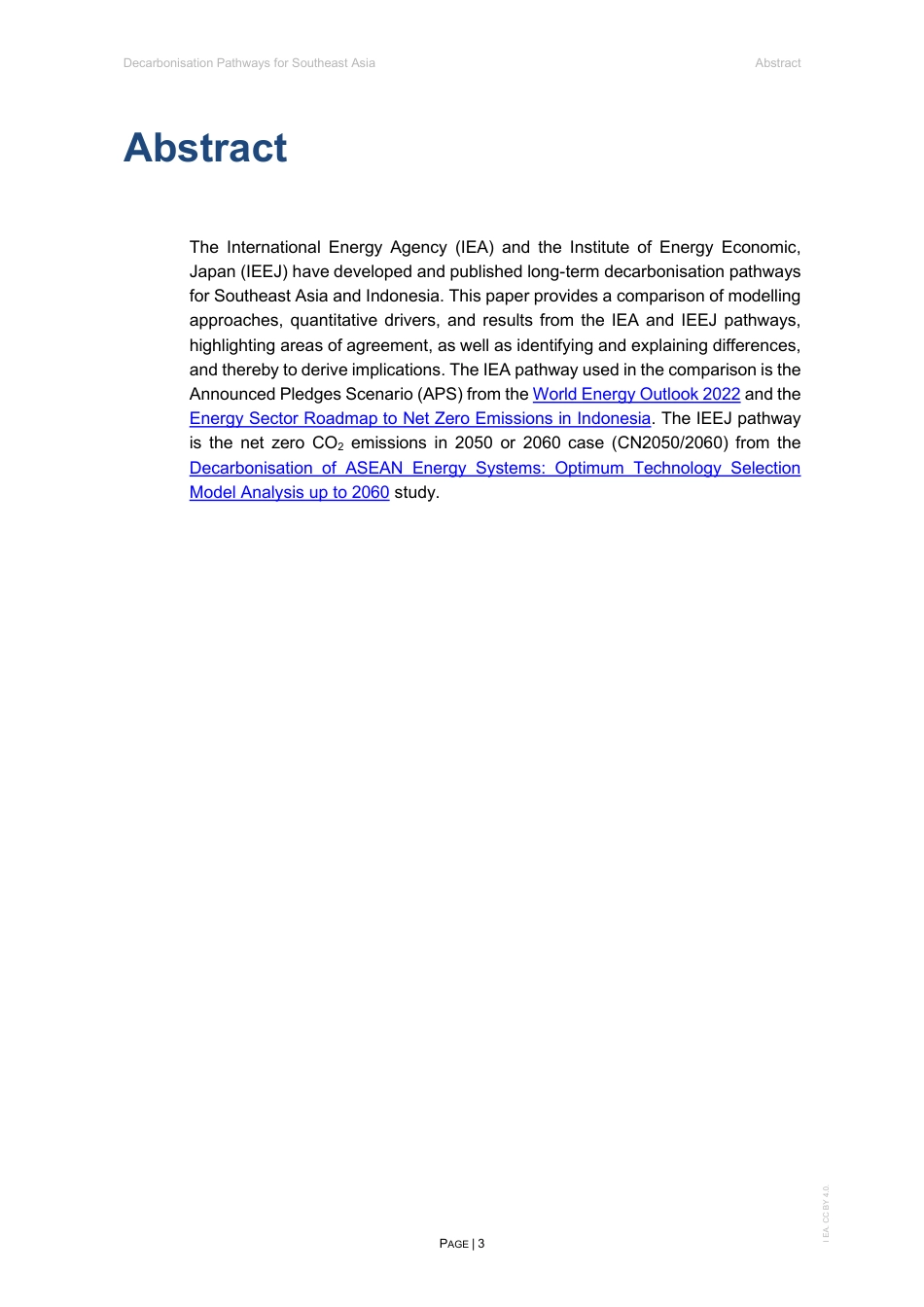Decarbonisation Pathways for Southeast AsiaThe IEA examines the full spectrum of energy issues including oil, gas and coal supply and demand, renewable energy technologies, electricity markets, energy efficiency, access to energy, demand side management and much more. Through its work, the IEA advocates policies that will enhance the reliability, affordability and sustainability of energy in its 31 member countries, 11 association countries and beyond.This publication and any map included herein are without prejudice to the status of or sovereignty over any territory, to the delimitation of international frontiers and boundaries and to the name of any territory, city or area.Source: IEA. International Energy Agency Website: www.iea.orgIEA member countries: AustraliaAustriaBelgiumCanadaCzech RepublicDenmarkEstoniaFinlandFranceGermanyGreeceHungaryIrelandItalyJapanKoreaLithuaniaLuxembourgMexicoNetherlandsNew ZealandNorwayPolandPortugalSlovak RepublicSpainSwedenSwitzerlandRepublic of TürkiyeUnited KingdomUnited StatesThe European Commission also participates in the work of the IEAIEA association countries:ArgentinaBrazilChinaEgyptIndiaIndonesiaMoroccoSingaporeSouth AfricaThailandUkraineINTERNATIONAL ENERGYAGENCYDecarbonisation Pathways for Southeast Asia Abstract PAGE | 3 I EA. CC BY 4.0. Abstract The International Energy Agency (IEA) and the Institute of Energy Economic, Japan (IEEJ) have developed and published long-term decarbonisation pathways for Southeast Asia and Indonesia. This paper provides a comparison of modelling approaches, quantitative drivers, and results from the IEA and IEEJ pathways, highlighting areas of agreement, as well as identifying and explaining differences, and thereby to derive implications. The IEA pathway used in the comparison i...



